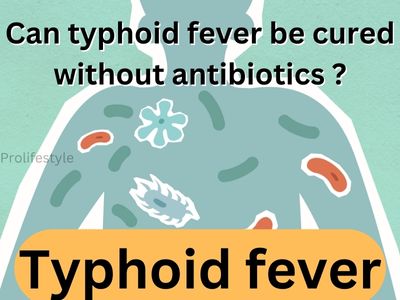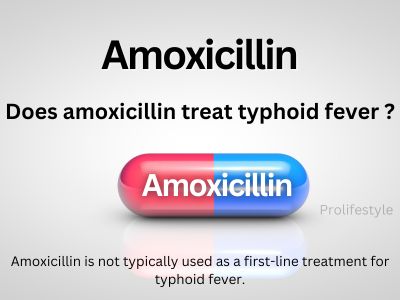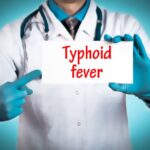
Antibiotics play a vital role in eradicating the Salmonella Typhi bacteria from the body, reducing the severity and duration of the illness, and preventing potential complications. Commonly used antibiotics for treating typhoid fever include fluoroquinolones and third-generation cephalosporins. The choice of antibiotic and the duration of treatment depend on the severity of the infection and local antibiotic resistance patterns.
If typhoid fever is left untreated or if the bacteria are not fully cleared from the body, it can lead to serious complications such as intestinal perforation, intestinal bleeding, or infections in other organs. In severe cases, untreated typhoid fever can be life-threatening.
It’s important to note that antibiotic resistance is a growing concern, and some strains of Salmonella Typhi have developed resistance to commonly used antibiotics. In such cases, healthcare providers may need to adjust the treatment plan based on the specific antibiotic susceptibility patterns in the region.
Yes you can cure the Typhoid fever without antibiotics in the beginning stage of typhoid by following the healthy typhoid fever diet.
FAQs of typhoid fever
Can antibiotics cure typhoid fever ?
Yes, antibiotics are the primary and utmost effective treatment for typhoid fever.
Generally used antibiotics for treating typhoid fever include fluoroquinolones( similar as ciprofloxacin) and third- generation cephalosporins( similar as ceftriaxone). The choice of antibiotic and the duration of treatment depend on the inflexibility of the infection and original antibiotic resistance patterns. It’s important to begin antibiotic treatment as soon as possible after diagnosing typhoid fever. Early treatment can help help serious complications and dock the duration of illness. generally, a course of antibiotics will last for 7 to 14 days, depending on the specific antibiotic used and the case’s response to treatment. While antibiotics are largely effective in treating typhoid fever, antibiotic resistance is a concern. Some strains of Salmonella Typhi have developed resistance to generally used antibiotics. In regions where antibiotic resistance is a problem, healthcare providers may need to acclimate the treatment plan grounded on the specific antibiotic vulnerability patterns in the area.
Can typhoid be cured using antibiotics ?
Yes, typhoid fever can be effectively cured using antibiotics. Commonly used antibiotics for treating typhoid fever include fluoroquinolones (such as ciprofloxacin) and third-generation cephalosporins (such as ceftriaxone). The choice of antibiotic and the duration of treatment depend on the severity of the infection, the patient’s age, and local antibiotic resistance patterns.
It’s important to start antibiotic treatment as soon as possible after diagnosing typhoid fever. Early treatment can help reduce the severity of the illness, prevent serious complications, and shorten the duration of symptoms. Typically, a course of antibiotics will last for 7 to 14 days, depending on the specific antibiotic used and the patient’s response to treatment.
It’s essential to complete the full course of antibiotics as prescribed by the healthcare professional, even if the symptoms improve. Stopping the antibiotics prematurely may lead to incomplete eradication of the bacteria, which could result in a relapse or the development of antibiotic resistance.
If you suspect you have typhoid fever or are experiencing symptoms such as high fever, headache, abdominal pain, and diarrhea, it is essential to seek medical attention promptly.
What antibiotics can treat typhoid ?
Typhoid fever can be effectively treated with several types of antibiotics. The choice of antibiotic depends on factors such as the severity of the infection, the patient’s age, and local antibiotic resistance patterns. Commonly used antibiotics for treating typhoid fever include :
- Fluoroquinolones : Ciprofloxacin and levofloxacin are commonly prescribed fluoroquinolone antibiotics. They are often used in cases of uncomplicated typhoid fever and have been effective in treating the infection.
- Third-generation cephalosporins : Ceftriaxone and cefixime are examples of third-generation cephalosporin antibiotics. They are commonly used for severe cases of typhoid fever or when there is a concern about antibiotic resistance.
- Azithromycin : Azithromycin is an alternative antibiotic that can be used for the treatment of typhoid fever, especially when the patient is allergic to other antibiotics or when there is resistance to other drugs.
It’s essential to start antibiotic treatment as soon as typhoid fever is diagnosed to reduce the severity of the illness and prevent complications. The course of antibiotics typically lasts for 7 to 14 days, depending on the specific antibiotic used and the patient’s response to treatment.
Does amoxicillin treat typhoid fever ?

Amoxicillin is not typically used as a first-line treatment for typhoid fever. Typhoid fever is caused by the bacterium Salmonella Typhi, and the primary antibiotics used to treat this infection are fluoroquinolones (such as ciprofloxacin) and third-generation cephalosporins (such as ceftriaxone).
Amoxicillin is a penicillin-type antibiotic and may have limited effectiveness against Salmonella Typhi. In cases where typhoid fever is suspected or confirmed, healthcare providers usually prescribe antibiotics that have demonstrated better efficacy in eradicating the bacteria and treating the infection.
It’s essential to seek medical attention promptly if you suspect you have typhoid fever or are experiencing symptoms such as high fever, headache, abdominal pain, and diarrhea. A healthcare professional can diagnose typhoid fever through blood tests and other diagnostic methods and prescribe the appropriate antibiotic treatment based on the severity of the infection and antibiotic resistance patterns in the region.



Pingback: Breakfast for typhoid patient – Prolifestyle
Pingback: Typhoid fever treatment and food – Prolifestyle